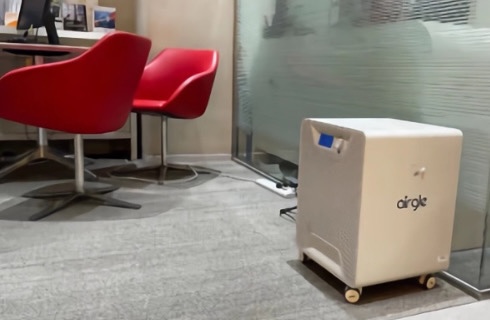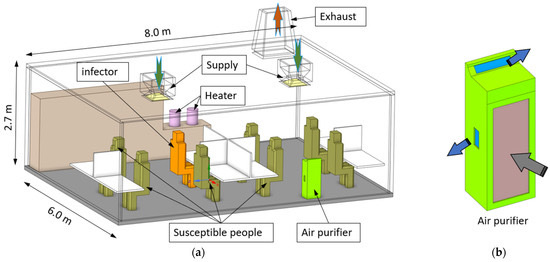
Poor office air quality costs businesses billions annually through reduced productivity, increased sick days, and higher healthcare expenses. Smart facility managers are discovering that professional air purification isn’t just a health investment—it’s a competitive advantage that directly impacts your bottom line.
The Hidden Cost of Poor Office Air Quality
Office workers spend 90% of their time indoors, yet office air can contain 2-5 times more pollutants than outdoor air. This invisible problem creates measurable business impacts:
Productivity Losses:
- 6-9% decrease in cognitive performance
- 15% increase in task completion time
- Reduced decision-making accuracy
- Impaired concentration and focus
Health-Related Costs:
- 35% more respiratory symptoms
- Increased headaches and fatigue
- Higher absenteeism rates
- Elevated stress and discomfort
Financial Impact:
- Average of $3,000 per employee annually in lost productivity
- Increased healthcare premiums
- Higher turnover and recruitment costs
- Potential liability from sick building syndrome
Common Office Air Quality Challenges
Volatile Organic Compounds (VOCs)
Modern offices are filled with VOC sources that create “sick building syndrome”:
Primary Sources:
- New furniture and carpeting off-gassing
- Cleaning products and disinfectants
- Copiers, printers, and office equipment
- Building materials and adhesives
- Personal care products and fragrances
Health Effects: Headaches, dizziness, respiratory irritation, and long-term neurological impacts.
Particulate Matter and Allergens
Microscopic particles circulate continuously in office environments:
Common Particles:
- Dust and dust mites
- Pollen entering through ventilation
- Paper fibers from printing and filing
- Skin cells and textile fibers
- Outdoor pollution infiltration
Airborne Pathogens
Open office designs and shared spaces facilitate disease transmission:
Transmission Risks:
- Respiratory droplets from coughing and talking
- Contaminated HVAC system circulation
- High-touch surface proximity
- Conference room concentration effects
- Seasonal flu and cold outbreaks
Office Air Purification Technology Solutions
HEPA Filtration for Offices
True HEPA filters provide the foundation for office air purification:
Performance Benefits:
- 99.97% removal of particles ≥0.003 microns
- Captures bacteria, viruses, and allergens
- Reduces dust accumulation on equipment
- Improves air clarity and freshness
- Low maintenance requirements
Ideal Applications:
- Open office environments
- Executive suites and private offices
- Reception and waiting areas
- Break rooms and common spaces
Activated Carbon for Chemical Control
Advanced carbon filtration addresses office-specific chemical challenges:
Targeted Removal:
- Printer toner and ozone emissions
- Cleaning product residues
- New furniture off-gassing
- Food odors from break areas
- Personal fragrance sensitivities
Smart Office Integration
Modern air purifiers integrate seamlessly with office technology:
Smart Features:
- WiFi connectivity for remote monitoring
- Integration with building management systems
- Automated scheduling for occupied hours
- Real-time air quality data display
- Energy optimization algorithms
Explore our Smart Office Air Quality Solutions
Office-Specific Implementation Strategies
Open Office Environments
Open offices require strategic placement and high-capacity systems:
Placement Strategy:
- Central units for maximum coverage
- Personal desk units for individual protection
- Corner placement to maximize air circulation
- Integration with existing HVAC airflow patterns
Recommended Features:
- Quiet operation (≤45 dB) for concentration
- High Clean Air Delivery Rate (CADR)
- 360-degree air intake design
- Energy-efficient operation
- Minimal footprint for space optimization
Executive Offices and Conference Rooms
Private spaces benefit from targeted, premium solutions:
Executive Suite Features:
- Whisper-quiet operation (≤35 dB)
- Premium aesthetics and finishes
- Advanced smart controls
- Real-time air quality display
- Customizable operation schedules
Conference Room Solutions:
- High-capacity units for meeting density
- Quick air turnover for back-to-back meetings
- Odor elimination for food and beverages
- Pathogen protection for group gatherings
Reception and Common Areas
High-traffic areas require robust, continuous protection:
Key Requirements:
- High air exchange rates
- Durable, commercial-grade construction
- Easy maintenance access
- Attractive, professional appearance
- Reliable operation during peak hours

Choosing the Right Office Air Purification System
Key Selection Criteria
Performance Requirements:
- Room size and ceiling height coverage
- Noise levels appropriate for work environment
- Energy efficiency for continuous operation
- Maintenance requirements and costs
- Integration capabilities with existing systems
Essential Features for Offices:
- Multi-stage filtration (HEPA + Carbon)
- Smart controls and scheduling
- Real-time air quality monitoring
- Professional appearance and design
- Reliable, commercial-grade construction
Office Air Purifier Specifications
Small Offices (up to 500 sq ft):
- CADR: 200-300 cfm
- Noise: <40 dB
- Features: WiFi, scheduling, air quality display
Medium Offices (500-1,500 sq ft):
- CADR: 400-600 cfm
- Noise: <45 dB
- Features: Building integration, zone control
Large Offices (1,500+ sq ft):
- CADR: 600+ cfm
- Multiple units or ducted systems
- Professional installation and service
Implementation Timeline and Process
Phase 1: Assessment and Planning
Professional Air Quality Audit:
- Baseline air quality measurements
- Employee health and comfort surveys
- Contamination source identification
- HVAC system evaluation
- Regulatory compliance review
Phase 2: Solution Design
Custom Solution Development:
- Equipment selection and sizing
- Placement strategy optimization
- Integration planning
- Installation timeline development
- Maintenance program design
Phase 3: Installation and Setup
Professional Implementation:
- Equipment delivery and placement
- System configuration and testing
- Staff training on operation
- Performance verification
- Documentation and warranty activation
Phase 4: Monitoring and Optimization (Ongoing)
Continuous Improvement:
- Regular performance monitoring
- Employee feedback collection
- System optimization adjustments
- Preventive maintenance execution
- Quarterly performance reporting
Office Air Quality Best Practices
Daily Operations
Maximize System Effectiveness:
- Run air purifiers continuously during occupied hours
- Maintain consistent filter replacement schedules
- Monitor air quality indicators regularly
- Coordinate with cleaning and maintenance activities
- Educate employees on air quality benefits
Maintenance Excellence
Preventive Care Program:
- Monthly visual inspections
- Quarterly filter assessments
- Semi-annual professional service
- Annual performance verification
- Immediate response to performance issues
Employee Education and Engagement
Building Air Quality Awareness:
- Share air quality improvements with staff
- Provide education on health benefits
- Encourage feedback on comfort levels
- Demonstrate commitment to workplace wellness
- Include air quality in sustainability initiatives
Frequently Asked Questions
Q: How quickly will we see improvements in office air quality? A: Most offices experience noticeable improvements within 24-48 hours, with full optimization typically achieved within one week of operation.
Q: What’s the ideal noise level for office air purifiers? A: For open offices, target ≤45 dB. Executive offices and conference rooms should use units operating at ≤35 dB for optimal comfort.
Q: How do office air purifiers integrate with existing HVAC systems? A: Professional units work in conjunction with HVAC systems, providing localized treatment that enhances overall building air quality without conflicting with existing ventilation.
Q: What ROI can we expect from office air purification? A: Most organizations see 200-400% ROI within the first year through reduced absenteeism, improved productivity, and lower healthcare costs.
Q: Do office air purifiers require special electrical installation? A: Most commercial office units operate on standard 110V power. Larger systems may require 220V circuits, which our installation team can coordinate with your facilities management.
Have more questions? Contact the office air quality specialists at Airgle for personalized answers
Getting Started with Office Air Purification
Transform your workplace into a healthier, more productive environment with professional air purification solutions. Our office air quality experts understand the unique challenges of corporate environments and deliver customized solutions that protect your people and enhance your business performance.
Next Steps:
- Schedule your complimentary office air quality assessment
- Receive customized recommendations for your space
- Review financing options and implementation timeline
- Begin experiencing the benefits of clean office air
Transform Your Office Environment Today
Ready to create a healthier, more productive workplace? Our office air quality specialists are standing by to provide personalized recommendations for your specific environment.
✓ Free office air quality assessment ✓ Customized solution recommendations
✓ Professional installation and service ✓ Ongoing support and maintenance
Schedule Your Free Office Air Quality Consultation
Compare office air purification systems or explore solutions for other commercial environments